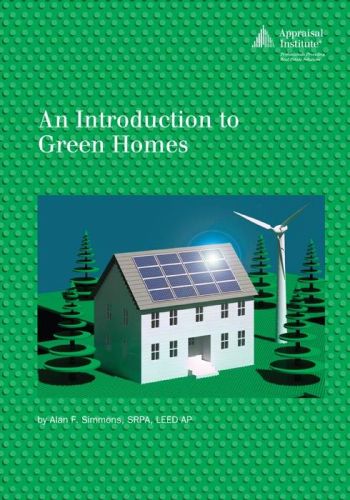Sprouting green in your mortgage portfolio?
Book Review: New to green housing? Here’s a guide to building and appraisal basics
- |
- Written by Jeremiah L. Rouane
- |
- Comments: DISQUS_COMMENTS
 An Introduction to Green Homes, by Alan Simmons, The Appraisal Institute, 145 pp.
An Introduction to Green Homes, by Alan Simmons, The Appraisal Institute, 145 pp.
An Introduction to Green Homes is a very good book for readers who want to learn the basic overview of what a green home is and the advantages of building one. The U. S. home building industry is transitioning in this direction and in the end home buyers, home builders, and the environment will benefit tremendously from this movement.
Among the chapter headings in the guide: Green Building Products; Green Remodeling; and Green Appraisal Issues. Resources included in the book’s appendices include a guide to online green resources and a helpful glossary of green acronyms.
Through my banking tenure of almost 13 years I have had the opportunity to work with many different home builders in the Billings, Mont., market. (I currently serve as Treasurer for the Billings Home Builders Association and have been on its Board of Directors for approximately six years.) Over this time, the movement toward green homes in Billings has been growing. I am far from an expert in respect to green homes, but am highly interested in how this will affect the home building industry. So this book was a good introduction.
How will appraisers and bankers deal with these elements when valuing a home? This is a developing area. I am sure some folks are more than willing to pay more for certain green features in their home, but what percentage of the buying public is willing to pay up for green, and whether appraisals will support higher values to pay for the homes, remains to be seen. These issues will take time to iron themselves out, but in the end the green homes being built will be more environmentally friendly homes than homes built in the past under older standards and with older, more-traditional materials.
Several common themes arise when discussing green home building: the environment, energy efficiency, resource conservation, indoor air quality and health benefits, and sustainability. The book is a relatively quick read, so it does not discuss any of these areas in extreme depth, but takes more of an overview approach. There are detailed case studies for reader consideration in the book, as well as suggested methodologies for appraisers considering the green element in home values. The case studies described concern green building in a variety of market types, ranging from Maine to New York City.
One area not discussed in the book is the federal government’s involvement in the promotion of green building. Washington, and even some state governments, have helped out buyers with potential tax credits for increasing the energy efficiency of a building, whether it is residential or commercial. I suspect the tax credits associated with new green buildings and green remodeling projects will take a major role in the growth of green products.
An Introduction to Green Homes is a great book to start your learning process in the green building arena and I would recommend it to any banker who has little to no experience in this area.
Want more banking news and analysis?
Get banking news, insights and solutions delivered to your inbox each week.
Tagged under Books for Bankers,













